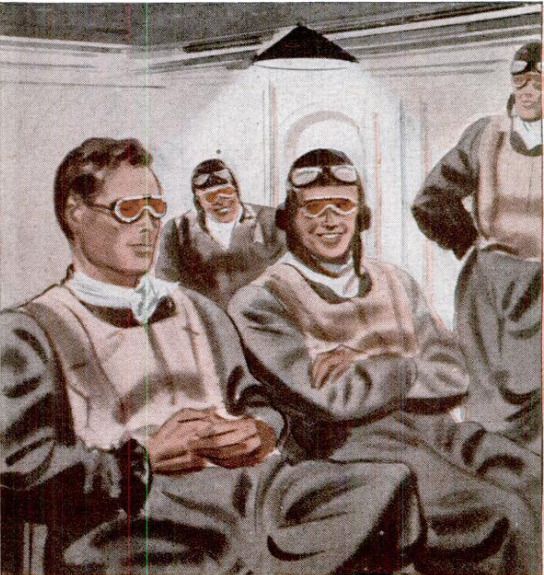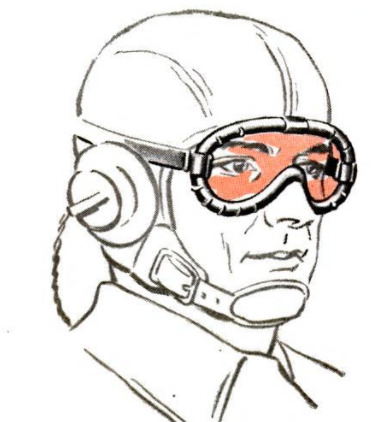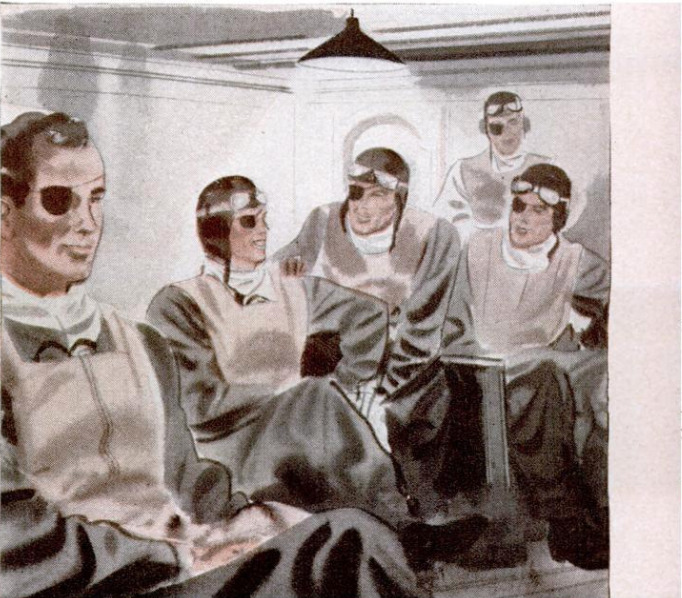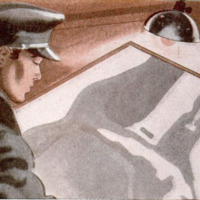-
Title (Dublin Core)
-
How to see in the dark
-
Article Title and/or Image Caption (Dublin Core)
-
Title: Eyes that see in the dark
-
Subtitle: "Dark Adaptation" solves quick adjustment to night vision
-
extracted text (Extract Text)
-
DO YOU know how to see in the dark? :
New scientific tricks enable you to do it better, |
and more swiftly. If you step from the street
into a dark movie theater, it will take several minutes
to see your way around, and half an hour before your
eyes’ “dark adaptation” is complete. But warplane |
pilots, lookouts at sea, and air-raid wardens can’t wait |
that long. Now military experts offer ways to prepare |
a person’s vision in advance of night duty without the :
inconvenience of sitting in total darkness.
Simplest of all, wear over one eye, for thirty minutes, |
a standard black eye patch from any medical counter—
making sure that no light leaks in. Step
into the darkness, remove the patch, and
that eye will be ready to spot a lurking sub
in the night. The other eye will come along
later. This scheme js recommended only for
long-range vision; it takes two good eyes to
keep from bumping into near-by objects.
Another plan avoids the hazard. Simply
don close-fitting, red-lensed goggles. Their
special tint excludes practically all rays
used in day vision, allowing both eyes to
accustom themselves to the dark at once.
Or the room illumination may be of the de-
sired hue, obviating need for goggles, if all
the occupants are preparing for night duty.
Even momentary exposure to bright, |
white light will ruin night vision. Therefore
the U. S. Hydrographic Office is altering the
color scheme of its official Navy charts so
that they may be viewed under red light or
through red goggles.
Formerly it printed land areas, light-
houses, and deep water in buff, orange-red,
and white, respectively. By red light, all |
became indistinguishably white, and the
lighthouses disappeared! Shallow water
and shoals, printed in blue and in green,
became a uniform gray.
Through skillful color juggling, the new
charts differentiate all features, under day- |
light and red light, too. With red illumina-
tion, land areas, printed in gray, appear
light-gray; lighthouses, printed in purple,
retain their color; deep water, printed in
white, remains white; shallow water, print-
ed light-blue, becomes medium-gray; and
shoals, printed dark-blue, turn to dark-gray.
Both civilians and military men may im-
prove the keenness of their night vision.
Experiments show that “night eyes” become
most sensitive to light just after moving.
Therefore watchers for airplanes are ad-
vised not to scan the heavens with long
sweeps of the eyes, but to move them jerkily
across the field of view, momentarily stab-
bing the sky at each stop before proceeding.
To see a very faint star, don't look
straight at it, but a little to one side. Known
to the ancients, this curious phenomenon
applies equally to sighting a pyrotechnic
signal, a plane, a tank, or a battleship at
night.
‘The retina, or light-sensitive part of the
eye, which corresponds to the film in a
camera, has two kinds of light perceptors
on its surface called rods or cones, accord-
ing to their shape. The cones, which see in
colors, serve for daylight vision. Since a
large proportion of them are massed in a
small spot at the center of the retina, called
the fovea, this is the point where day vision
is most distinct, and you naturally turn
your eyes directly upon an object of interest
to bring the fovea to bear upon it.
But at night, the cones quit working. At
about the illumination of bright moonlight,
their task is taken over by the rods sur.
rounding the center of the eye. The fovea,
with its cones, goes practically blind. This
explains why looking at an object out of the
corner of your eye, and thus bringing its
image upon the rods, makes it visible. The
rods, although color-blind, can see with but
1/5,000 of the light required by the cones.
-
Language (Dublin Core)
-
eng
-
Date Issued (Dublin Core)
-
1943-01
-
pages (Bibliographic Ontology)
-
55-57
-
Rights (Dublin Core)
-
Public Domain (Google Digitized)
-
Archived by (Dublin Core)
-
Matteo Ridolfi
-
Marco Bortolami (editor)
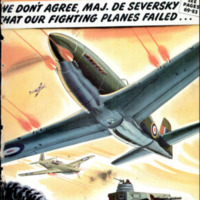 Popular Science Monthly, v. 142, n. 1, 1943
Popular Science Monthly, v. 142, n. 1, 1943

